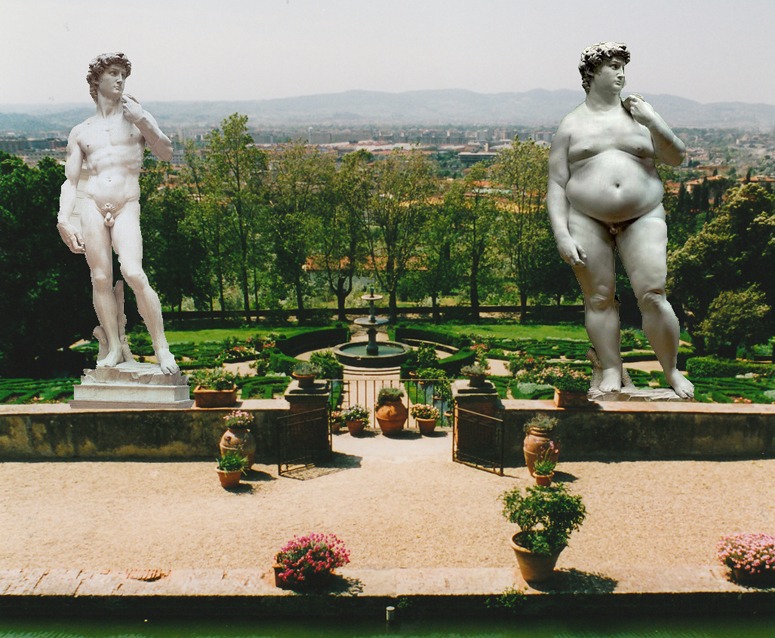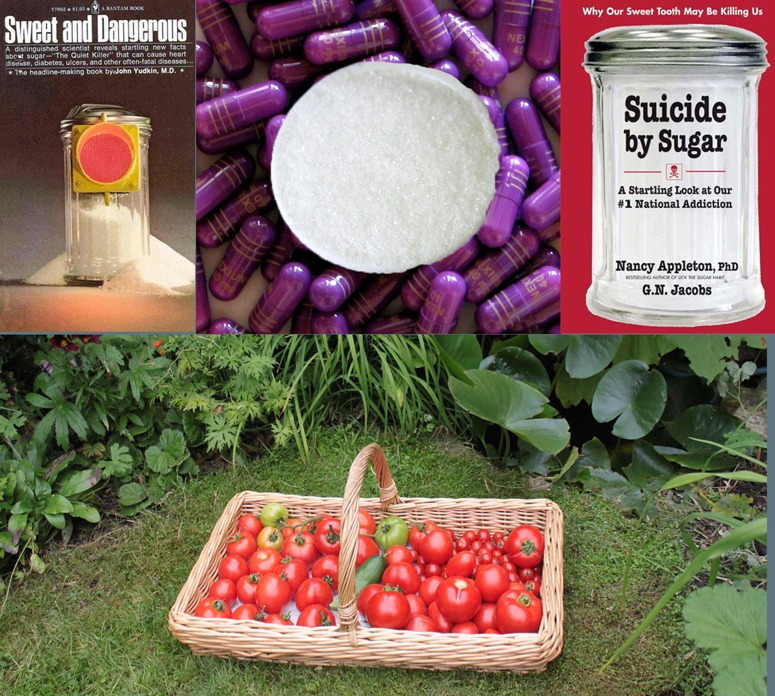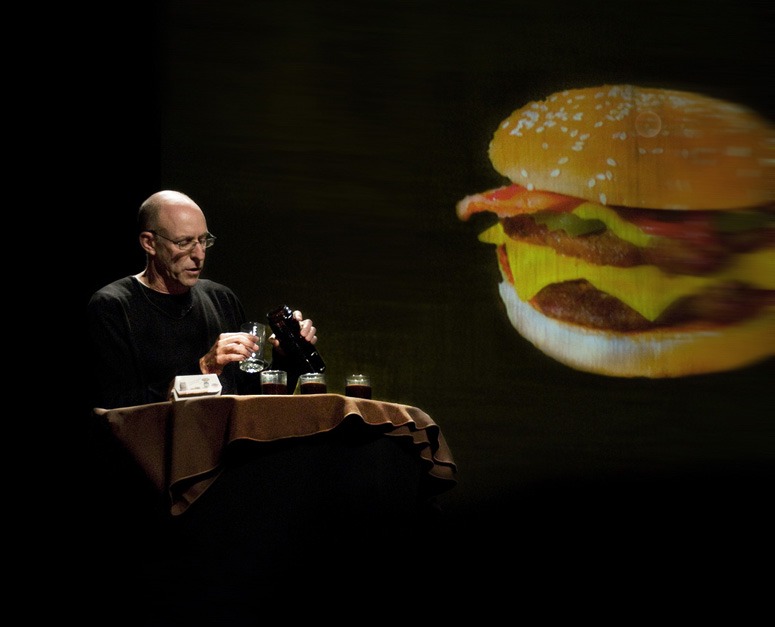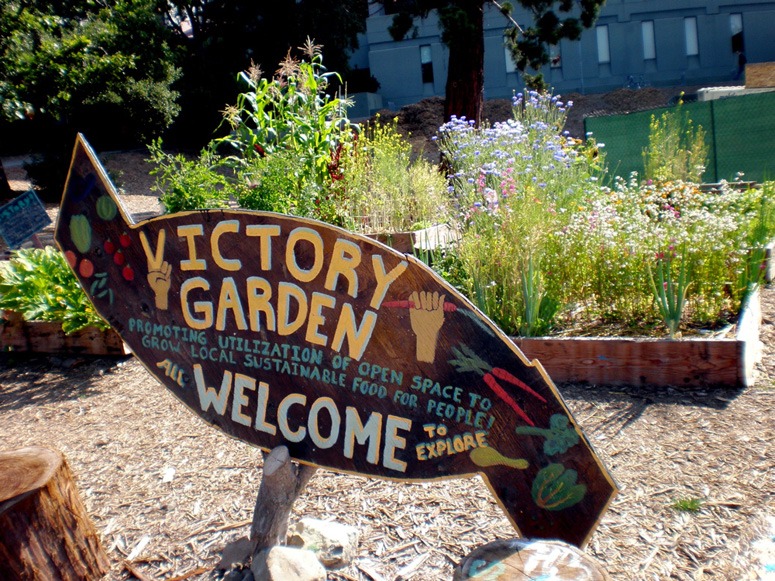
Michaelangelo’s David has wandered from his usual haunt, outside the Palazzo della Signoria in Florence, to visit the nearby garden of the Villa La Petraia. Looking west, he sees his American cousin, Dave, and wonders why he eats so much bread, candy and icecream, and why he has grown so fat, and why he has diabetes and heart disease. The trouble, David concludes, is that so many of his male contemporaries, despite their admiration for his lean figure, became interested in the aesthetic aspect of garden design. In Michaelangelo’s day, the main use of gardens was to grow vegetables and herbs, to flavour the fresh meat hunted on the hills around Florence, and fresh fruit, to eat as a desert. The Baroque style originated in Italy, but was developed in France and then returned to influence Italy. The old beds of fruit, herbs and vegetables then became ornamental and were laced with the clipped box hedges we see in Italian gardens today. Italian nobles turned away from their ‘Palaeolithic’ diet of meat, vegetables and herbs. Instead, they began to stuff themselves with pasta. Baroque navigation took Europeans to the Americas and by the late twentieth century Americans were stuffing themselves with pizza, hamburgers, candy and sweet soft drinks. This gave them the characteristic Dave figure, also seen at Villa La Petraia. Luckliy, Dr. Eenfeldt,, from Sweeden has given the Americans an excellent lecture on the Low Carb High Fat (LCHF) diet and you can see it on Youtube. See also: Sugar may be the world’s worst poison – so the EU subsidises sugar growers through its Common Agricultural Policy (CAP)
Category Archives: urban food
Sugar may be the world's worst poison – so the EU subsidises sugar growers through its Common Agricultural Policy (CAP)

Sugar is a deadly poison and subsidised by the EU Common Agricultural Policy CAP. So grown your own food!
Prof John Yudkin showed, in 1957 that the consumption of sugar and refined sweeteners is closely associated with coronary heart disease and type 2 diabetes. The argument was presented in a famous book Pure, White and Deadly (1972) which was, of course, bitterly attacked by the sugar and soft drinks industries. This may be why Robert H. Lustig (Prof of Clinical Pediatrics, at the University of California) called his much-watched Youtube video Sugar:the Bitter Truth. He extends Yudkin’s argument and explains how sugar is a major factor in heart disease, hypertension and many common cancers, with most of our sugar intake coming from processed foods and soft drinks. A dangerous consequence of eating sugar is that it stimulates the apetite and makes you put on weight. The food processors’ second favourite additive, salt, may be the world’s second worst poison.
So how does the EU’s Common Agricultural Policy (CAP) deal with this terrible poison? It gives its largest subsidies to sugar producers, of course. Tate & Lyle Europe is the largest UK recipient of CAP money (T&L has received €828m since 1999). I say ‘of course’ because the CAP is a very bad thing, if not quite as bad as the Common Fisheries Policy (CAF) which has led to the ruination of Europe’s fish stocks.
So what has sugar to do with landscape and gardens? Two things (1) the safest food to eat is food which has not been influenced in any way by food processing or the CAP (ie food which has been home grown in gardens and urban agriculture plots) (2) Europe’s current financial crisis is the best hope for some time that the CAP might be reformed – and when this happens there will be an opportunity to switch some of the expenditure towards rural public goods – and away from such notable public bads as the production and use of sugar in processed foods. Landscape planning for growing vegetables in urban areas has to become a key input to the urban design process. It involves strategic policies for water, soils, air, light recycling, land-use and roofspace-use.
The safest nutritional policies are (1) grow you own food (2) cook your own food. The home-grown tomatoes in the above photograph are so delicious they do not need cooking or flavouring. An interesting thought is that if more people composted household waste and grew their own food then GDP/head would fall, because less food would be sold, transported etc. There would also be less expenditure on health care. So I guess politicans, who are elected for promoting ‘economic growth’ will be against it, supported by their economic advisers.
London recreational looting in August 2011
Hozinja took this photo and made this comment ‘Caught in the middle of rioting on my way home last night. Fortunately the trouble was brief on Walworth Road and no buildings were set alight. Just young kids sensessly looting. These two girls stormed out of Boots with a few pickings as the police were making their way down the road.’ The two girls are wicked but they are not ‘senseless’. They are looting a shop and they know that they are unlikely to be arrested. If, as elsewhere, a large group is involved then it would be riot (‘A violent disturbance of the peace by a crowd’) and I agree with Christine that the Riot Act should be read and enforced. This act was a British statue from 1715-1973. It may have been in need of modification but it should not have been repealed. Our forebears were right to involve a non-policeman in the decision. Typically a magistrate would read the Riot Act and anyone who remained at the scene would be guilty for that reason alone. The wording was ‘Our Sovereign Lord the King chargeth and commandeth all persons, being assembled, immediately to disperse themselves, and peaceably to depart to their habitations, or to their lawful business, upon the pains contained in the act made in the first year of King George, for preventing tumults and riotous assemblies. God Save the King!’
But how to deal with the riot is less important than the prevention of future riots. I agree with John Bird (founder of the Big Issue magazine) that every person who receives unemployment benefit should do something in return for the money. But what could they do? My suggestion, thinking about my area of interest, is that 20% of the greenspace in London could be used for urban agriculture and that the work could be done by the presently unemployed.
Straying outside my professional interests, there are many elderly and infirm people who could stay on in their own homes, instead of being brutalised in ‘care’ homes, if they had personal helpers.
The underlying truth is that ‘the devil makes work for idle hands’ – assuming he counts looting a Boots shop as ‘work’.
Grow your own food with sunlight – instead of eating oil
Most of the oil is used to produce the nitrogen used to grow the ingredients for the burger – according to Michael Pollan. The alternative is to eat locally grown food for which the energy comes from the sun – and from human labour. If there was to be a return to ‘sun-grown’, instead of ‘oil-grown’ food then agriculural employment would have to rise again after a long fall.
The other point about a burger-rich diet is that it is extremely bad for your health. The US healthcare crisis is said to be is a consequence of the US diet which is a consequence of the US pattern of agricultural subsidies. In Europe, the pattern is similar but not so severe.
Landscape architects and garden designers can do a little to ameliorate the problem: they can include food plants in their planting designs.
Above image courtesy Pete Foley. Below image, of a local garden in Berkeley, California, courtesy hfordsa
City farming with Castanea sativa, the sweet, beautiful and delicious chestnut

Charles II planted avenues of sweet chestnut in Greenwich Park in 1660 - and they continue to yield a good crop of delicious nuts
The yield from a mature woodland of Castanea sativa is similar to the yield of rice from a paddy field, both nutritionally and in terms of harvested weight:
- Chestunt yields range from 1-5 tonnes per hectare (this figure could be raised by careful management).
- A good individual chestnut tree may yield more than 25 kg per year.
- Rice yields, in the Phillipines, were raised from 1.16 tons per hectare in 1960 (according to the United Nations Food and Agriculture Organization) to 3.59 tons per hectare in 2009. The yield from organic rice is about one third the yield for intensively farmed rice.
- Chestnut timber is highly valued and is said to be more durable that oak when used outdoors.
- The land beneath and around the chestnut trees in Greenwich Park was used for grazing deer, which provided organic meat.
- When growing chestnuts, you do not need to spend half your life bent double in muddy water being eaten alive by insects which enjoy the hot steamy conditions more than you do
- Harvesting chestnuts provides healthy autumn exercise for urban populations
So here is my call to the world’s landscape architects: plant parks and road verges with Castanea sativa, the Sweet, Beautiful and Nutricious Chestnut Tree! You can make a substantial contribution to (1) world food supply (2) world biodiversity (3) combating global warming (4) nutrition, exercise and health. The health benefits of chestnuts are as follows:
- Chestnuts, unlike other nuts and seeds, are relatively low in calories; contain less fat but are rich in minerals, vitamins and phyto-nutrients that benefit health.
- Nutritionally, chestnuts are similar to other starchy foods such as sweet potato, sweet corn, potatoes etc, consisting of mainly starch. However, they also contain high quality proteins.
- Chestnuts are good source of dietary fiber; they provide 8.1 g (about 21% of RDI) per 100 g. Fiber diet helps lower blood cholesterol levels by remove excess cholesterol absorbing in the intestines.
- Chestnuts stand out from other nuts and seeds because of their nutrition contents. They are exceptionally rich in vitamin-C. 100 g nuts provide 43 mg of vitamin C (72 % of DRI). Vitamin C is essential for the formation of matrix in teeth, bones and blood vessels. Being a strong anti-oxidant, it offers protection from harmful free radicals.
- Chestnuts are the one of the nuts rich in folates. 100 g nuts provide 62 mg of folates (or 15.5%). Folic acid is required for the formation of red blood cells, DNA synthesis. Adequate consumption of food rich in folates during peri-conception period helps prevent neural tube defects in the fetus.
- Chestnuts are a rich source of mono-unsaturated fatty like oleic acid (18:1) and palmitoleic acids (16:1). Studies suggest that monounsaturated fats in the diet help lower total as well as LDL (bad cholesterol) and increase HDL (good cholesterol) levels in the blood. Mediterranean diet which is rich in dietary fiber, monounsaturated fatty acids, omega fatty acids and antioxidants help prevent coronary artery disease and strokes by favoring healthy blood lipid profile.
- Chestnuts are an excellent source of minerals such as iron, calcium, potassium, magnesium, manganese, phosphorus and zinc. Provide very good amount of potassium (518 mcg / 100 g). Potassium helps counter hypertensive action of sodium, lowers heart rate and blood pressure. Iron helps prevent microcytic-anemia. Magnesium and phosphorus are important components of bone metabolism.
- Chestnuts are also rich in many important B-complex groups of vitamins. 100 g of nuts provide 11% of niacin, 29% of pyridoxine (vit.B-6), 100% of thiamin, and 12% of riboflavin.
- Chestnuts, like hazelnuts and almonds, are free in gluten and therefore popular ingredient in the preparation of gluten free food formulas for gluten-sensitive, wheat allergy and celiac disease persons.
- The Chinese Chestnut (Castanea mollissima) is particularly rich in vitamin A. It provides 202 IU per 100 g.
Price comparison: organic rice and organic chestnuts:
- Organic Chestnuts sell on Amazon for more than £30/kg
- Organic Rice sells for less than £5/kg
AND DON’T FORGET: Chestnuts are delicious.
Clean, green and responsive: the future of architecture?
Lumenhaus inspired by Mies Van der Rohe’s Fansworth House is described by Virginia Tech students as responsive architecture. Responsive architecture according to Nicholas Negroponte’s definition is “a class of architecture or building that demonstrates an ability to alter its form, to continually reflect the environmental conditions which surround it.”
The aim of Lumenhaus designers was to “maximise user comfort with environmental protection” to make the user’s life “simpler, more energy efficient and less expensive.” They say the goal was to balance design quality, resource conservation and energy efficiency to produce architecture which achieves “beautiful enduring sustainability.”
One of the most significant benefits of the Lumenhaus construction concept is that it is off-grid (with options for feeding energy to the grid where appropriate), prefabricated and transportable making it an ideal solution for remote housing (increasing production standards, optimizing costs and providing improved accessibility to remote locations), temporary housing (mining and student communities) and emergency housing (after natural disasters).
Landscape architects could contribute significantly to the concept by, among other strategies, incorporating green wall technology on the wall cladding and designing a compatible site responsive green roof space beneath a solar panel shaded umbrella roof.




